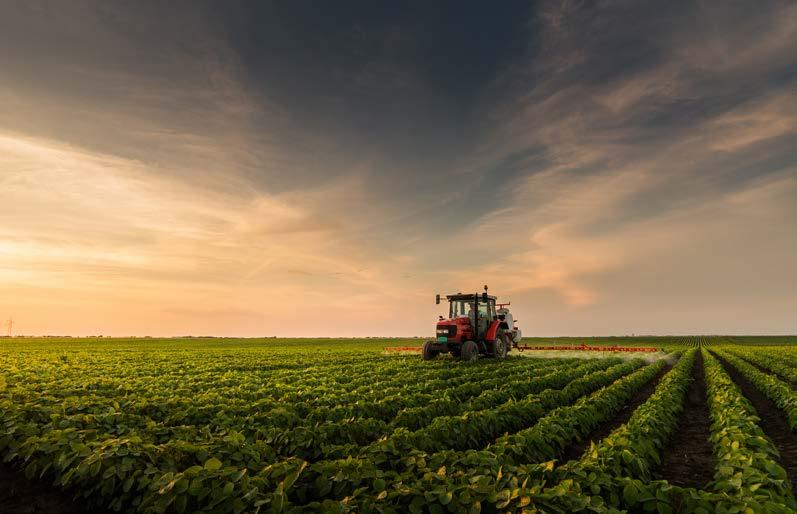
7 minute read
INSIDE THIS ISSUE
The role of pesticides in environmentally sustainable farming
The farming sector uses a variety of techniques and tools to protect crops from pests and to sustainably produce viable and robust crops. Pesticides are a crucial tool in sustainable farming.
Advertisement
Strategies to reduce the amount of chemical residue on foods and within the environment remain a priority within the agricultural sector. Integrated Pest Management programs combine techniques to protect crop yield while upholding stewardship practices that ensure the improved sustainability of agricultural chemical use and protection of the environment.
Friend or foe on the farm?
Farmers work alongside nature to fight off pests naturally by utilising biopesticide practices.
Farmers have long known that planting certain flowers encourages specific insects that will feed off the unwelcome pests that can impact crop yields and can even continue to impact future crop generations. Some species of ground beetles, dragonflies, lady beetles and some spiders eat destructive pests such as slugs, snails, mites and aphids.
Recently, researchers at the United Kingdom-based Center for Ecology and Hydrology (CEH) have been conducting a study to deepen their understanding of these useful predators.
The study utilised strips of wild flowers that incorporated a variety of flowers with the purpose of attracting a broad community of predatory and patristic insects.
Dr. Ben Woodcock at CEH notes, “Rather than just promoting predominantly ground-active predators, we need to support those in the canopy or those that target internal pests living in stems or seed pods.” While these ‘friendly’ creepy crawlies can aid with the protection of crops and save resources, they aren’t able to replace the crucial need for pesticides entirely.
Pesticide formulations continue to improve
Pesticide formulations have changed over time to water-based as opposed to petroleum- or organic solvent-based. Water-based pesticides allow farmers to increase the bio-efficacy of the products by reducing the amount of product used while increasing the coverage which means less wastage and smaller dose rates.
The use of pesticides is essential for the successful production of both organic and conventional crops. Continued agricultural innovations further reduce ecological impacts of pesticides while assisting our farmers to produce safe and nutritious crops.
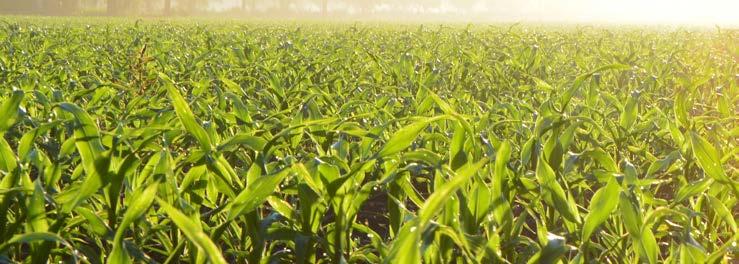
Glyphosate: The facts
Wondering about glyphosate and its safety? There has been a lot of misunderstanding and misinformation in the media. It’s important to know the facts, so here are some important ones.
Q What is glyphosate?
Glyphosate is the most widely used herbicide in the world. It is independently recognised as one of the safest and most effective herbicides ever developed. There are many products containing glyphosate registered for use in Australia, from home gardens through to commercial farms.
AUSTRALIAN PESTICIDES AND VETERINARY MEDICINES AUTHORITY (APVMA)
Q Should I be concerned about the toxicity of glyphosate?
Glyphosate is less toxic than table salt. Independent scientific analysis confirms glyphosatebased products are safe. More than 800 scientific studies and independent safety assessments by the world’s most respected regulators support the fact that use of glyphosate-based products does not cause cancer. Q Haven’t US court cases proven a link between glyphosate and cancer?
No, the recent California civil litigation cases have been decided by juries—not on the basis of scientific assessment. The US Agricultural Health Study has been running since 1993 looking specifically at the risk between glyphosate exposure and non‑Hodgkin lymphoma.
In that time investigators from the National Cancer Institute, the National Institute of Environmental Health Sciences, the Environmental Protection Agency and the National Institute for Occupational Safety and Health have comprehensively analysed data from over 89,000 farmers and their spouses.
They have found no association between glyphosate and non‑Hodgkin lymphoma— regardless of the exposure level.
Q How can I be sure glyphosate is safe?
Australia’s agricultural chemical industry is regulated to the same extent as human pharmaceuticals. Before any agricultural chemical product can be sold or manufactured in Australia, it goes through rigorous scientific assessment by the Australian Pesticides and Veterinary Medicines Authority (APVMA). They assess the safety and expected use of the product. In 2016 the APVMA examined glyphosate, following IARC’s classification, and found there were no grounds for its approved uses to be reconsidered. Every independent, science‑based regulatory agency globally (including; Germany, New Zealand, Canada, the US, Japan and the European Union) has comprehensively evaluated glyphosate and found it safe to use.
US ENVIRONMENTAL PROTECTION AGENCY (EPA)
PROFESSOR BERNARD STEWART, SCIENTIFIC ADVISOR, CANCER COUNCIL AUSTRALIA
Q Isn’t glyphosate bad for the environment?
Glyphosate, like all crop protection and weed management products, plays a critical role in environmentally sustainable land management practices. The application of glyphosate eradicates pests without having to disturb the soil and disrupt the weed’s roots via tillage. It is scientifically proven that conservation tillage, enabled by glyphosate, can reduce soil erosion by up to 90 per cent, significantly improve water retention and increase or maintain carbon storage.
Q How can I use glyphosate safely?
All chemical products, including home cleaning products used daily, have instructions for safe and correct use on the label. To ensure the safe use of chemical products, including glyphosate-based herbicides, always read the label and use as directed.
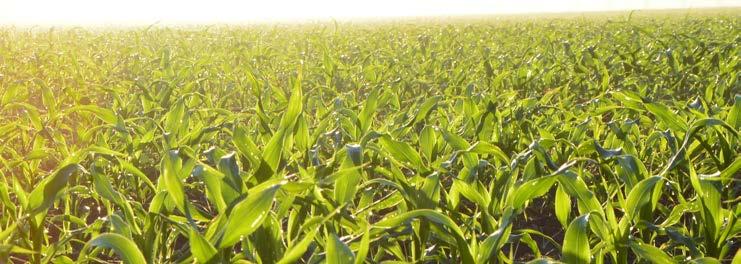
Q Why did IARC classify glyphosate as a probable carcinogen?
The International Agency for Research on Cancer (IARC) is not a regulatory agency and does not undertake any research of its own. It plays a role in advising regulatory bodies on potential hazards. This allows the relevant regulatory agencies to assess if there are any associated risks and manage them appropriately. Substances such as aloe vera, pickled vegetables and coconut oil are all on the IARC lists of possible or probable carcinogens. In 2015 IARC placed glyphosate on its probable carcinogen list from a pure hazard perspective. While that sounds alarming at first, it simply means glyphosate is in the same category as shift work or consuming red meat or beverages above 65°C. The world’s leading independent scientific regulators comprehensively reviewed the IARC report and reaffirmed that products containing glyphosate pose no risk of cancer.
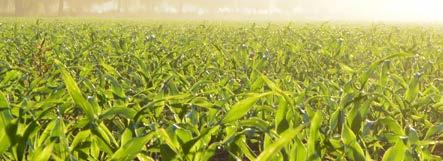

Q What if we didn’t have glyphosate?
Glyphosate is an essential tool for Australian farmers, environmental land managers and councils to be productive in an environment that is under constant threat of weeds. Over two thirds of the food on your plate and the beer or wine in your glass exists because our farmers have access to safe, modern crop protection products. Without crop protection, up to 80 per cent of the globe’s crops could be lost to weeds pests and diseases. Continued judicious use of agricultural chemicals ensures Australian farmers, environmental land managers and councils can effectively control pests, weeds and diseases. In turn, the community enjoys safe, abundant, disease‑free and affordable food, pristine natural environments and parks free from invasive weeds, and safe roadsides with visible signage.
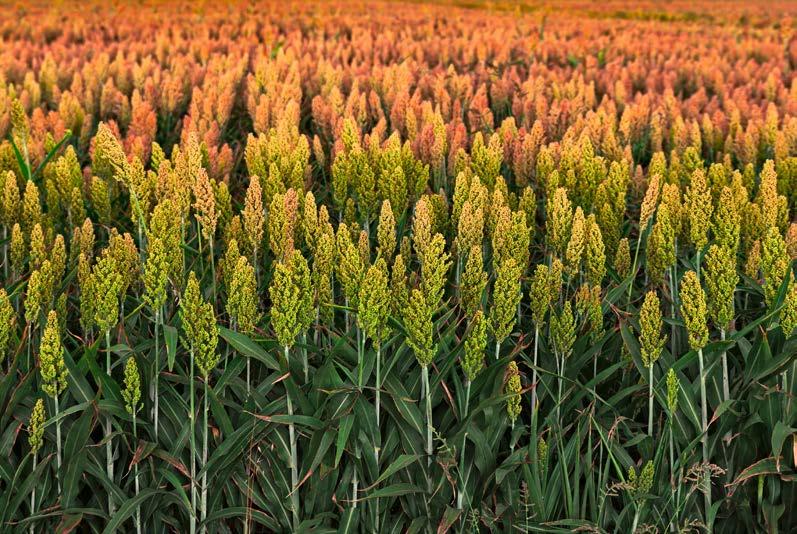
Gene-editing making crops more digestible
Sorghum is the fifth most important cereal crop worldwide (after rice, wheat, maize and barley) and is a staple food for more than 500 million people.
Proteins in the sorghum grain are not easily digested by humans or animals, making sorghum less valuable than wheat or maize. Now, researchers from the University of Queensland have produced new sorghum lines, using gene-editing to knock out some existing genes to increase the digestibility of the crop.
Protein content in the new, improved lines reaches a whopping 15–16 per cent, compared to 9–10 per cent for conventional varieties. This major breakthrough is expected to generate strong interest in the 46 Sub-Saharan African countries that rely on sorghum as a primary food source.
The discovery also has potential to reduce costs for the poultry, pig and beef feedlot industries. For example, the increase in protein is expected to result in about a 50 cents per head reduction in cost when producing a two-kilogram meat bird.
THE WORLD’S MOST IMPORTANT CEREAL CROPS
RICE BARLEY
MAIZE SORHGUM
WHEAT
The review of the Gene Technology Regulations (2016–19) that came into force in October 2019 led to SDN-1 being excluded from the scope of regulation. This means that the new sorghum lines produced using SDN-1 mediated gene-editing were able to be sown at the University of Queensland’s St Lucia campus, in the same way as plants produced via conventional breeding.
This demonstrates the importance of having a sound, science-based regulatory system that keeps Australia up to date with the latest scientific progress.


